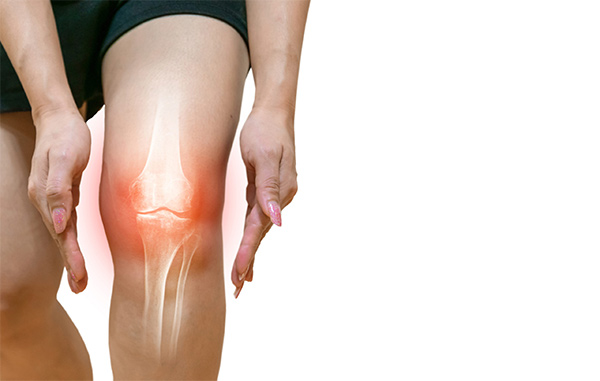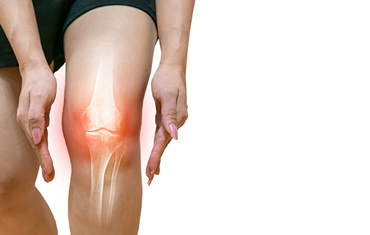
Chronic knee pain can have lots of different causes
The most common cause of knee pain is damaged cartilage. Knee cartilage forms a thick, slick barrier to wear and tear inside the knee joint. When cartilage is healthy, your knees move effortlessly, without stiffness or painful friction. If the knee cartilage is worn or damaged, every step you take can cause significant discomfort. Before long, simple activities like climbing stairs or taking a daily walk are too uncomfortable to bear.
Not too long ago, repairing a knee with damaged cartilage meant one thing: knee replacement surgery. But today, there are other treatments designed to help cartilage repair itself and regenerate new tissue. Cartilage regeneration techniques can be very effective. However, they do require doctors with special training and a significant amount of skill to get the best results.
What is Cartilage?
Cartilage is a tough tissue found in different parts of your body. There are different types of cartilage. The kind that lines your knee joints is called hyaline cartilage, but it’s also often referred to as articular cartilage. That’s because it helps your body articulate or move.
When it’s healthy, cartilage forms a very smooth surface on the ends of the bones that make up a joint. Over time, wear and tear can cause pits, bumps, or divots, which means your joints won’t move as smoothly. Friction inside the joint builds up, causing inflammation, stiffness, and pain. Injuries to the joint can also cause cartilage damage. Sometimes, the cartilage thins out or it may be naturally thin, increasing the damage caused by wear and tear.
Cartilage doesn’t contain any nerves. The pain you feel from damaged cartilage is actually coming from the ends of the bones as they rub against each other. Inflammation and swelling inside the joint also cause pain and stiffness. Cartilage also doesn’t contain any blood vessels. Instead, it absorbs nutrients from the tissues that surround it.
Can Cartilage Repair Itself?
Our bodies have an amazing ability to heal, but that process relies a lot on circulation. When tissue is damaged, our blood brings in oxygen and nutrients to help the tissue repair itself. Blood also carries away debris and toxins formed by the inflammation that goes along with healing. Since it doesn’t have blood vessels, can cartilage heal on its own? Unfortunately, any healing that does occur is very limited. In addition to the limited blood flow, cartilage cells don’t replace themselves very rapidly. That means it can take a very long time for damaged cells to be replaced with new, healthy cells.
Worse, once cartilage starts to break down, the increase in friction inside the joint can cause additional cartilage damage. That’s why arthritis is called a degenerative disease — without treatment, it tends to get worse over time.
What Types of Treatments can Restore Knee Cartilage?
While damaged knee cartilage used to mean joint replacement surgery, now there are cartilage repair techniques designed to replace damaged cartilage. Other techniques are aimed at promoting cartilage regeneration in an area that’s been damaged. A common question that is asked is, Dr. Van Thiel has extensive experience in a wide variety of cartilage repair and regeneration techniques.
-
Osteochondral allograft transplantation surgery (OATS)
OATS uses donated cartilage grafts from donors to replace and replace damaged cartilage. Careful sizing of the graft ensures the new cartilage “plugs” fit snugly for better healing and recovery to allow patients to return to regular activities without greater loss of function. OATS restores the layer of cartilage to maintain normal joint movement.
-
Matrix-induced autologous chondrocyte implantation (MACI)
MACI uses a tiny sample of your own cartilage as a basis for growing new, healthy cartilage that can be used to repair cartilage defects in the knee. The sample is affixed to a special “scaffolding” and allowed to grow into a full-thickness graft over several weeks. Then the graft is implanted into your knee, replacing the damaged cartilage. Patients experiencing knee pain, swelling, stiffness, or “catching” sensations can benefit from this procedure to help them return to normal knee function.
-
Microfracture (MFx)
MFx is another technique that’s commonly used for cartilage restoration. This procedure stimulates the marrow by creating tiny holes in the bone around the damaged area of cartilage. These perforations are used to stimulate stem cells to fill and remodel the injured cartilage. The procedure is minimally invasive and relatively simple to execute. It has also been shown to be a cost-effective procedure among similar surgical options.
-
Stem cell treatment
Stem cell treatment is emerging as a very good option in some patients. This treatment uses a patient’s own stem cells harvested from their bone marrow. The cells are “programmed” to form new, healthy cartilage cells to replace damaged cartilage. Recent studies have explored taking cells derived from facial cartilage to encourage growth. Two independent studies demonstrated that facial cartilage shows more effective repair than cartilage taken from limbs. Studies into stem cell regeneration therapy are still ongoing but show great promise for future treatment options.
Knee Cartilage Regeneration: How Long Does it Take to Recover?
Recovery times vary depending on the type of procedure you’re having and the extent of the treatment. During recovery, you’ll have limitations on weight-bearing activities. You may need to use a cane or wear a brace or cast for a brief period. Once healing is underway, physical therapy may help your knee regain strength and flexibility. After your evaluation and exam, Dr. Van Thiel will discuss how long your recovery will be and what you can expect.
What are the Success Rates of a Full Recovery from Knee Cartilage Regeneration?
Knee cartilage restoration techniques have come a long way since they were first introduced. Today, patients can expect success rates up to 80% to 90% for some procedures. Dr. Van Thiel will provide you with complete follow-up care to ensure you experience the best results from your procedure.
To learn more about knee cartilage regeneration and restoration methods, including FDA trials where Dr. Van Thiel is a researcher, call OrthoIllinois at or schedule an office visit today.





